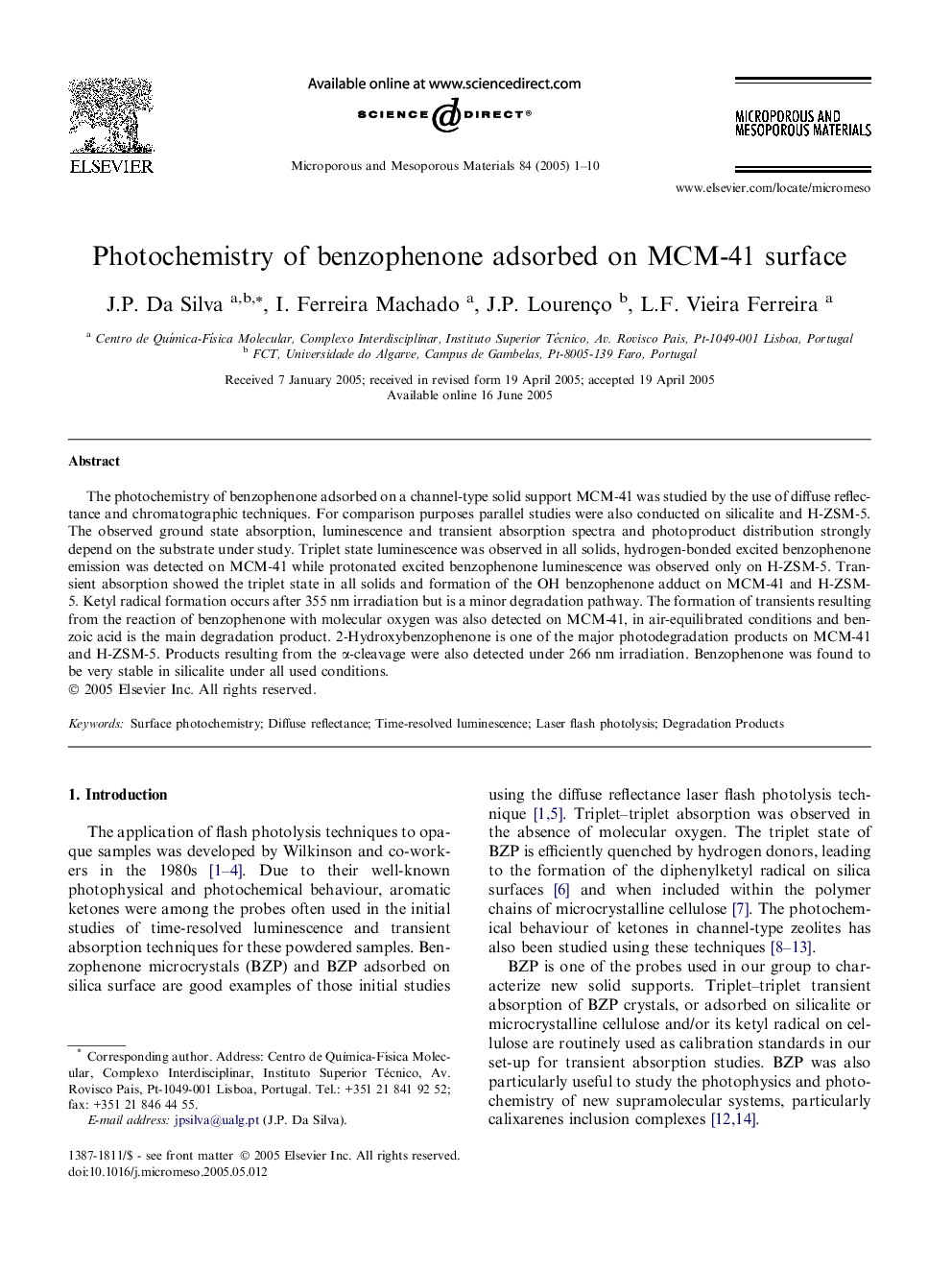| Article ID | Journal | Published Year | Pages | File Type |
|---|---|---|---|---|
| 9617583 | Microporous and Mesoporous Materials | 2005 | 10 Pages |
Abstract
The photochemistry of benzophenone adsorbed on a channel-type solid support MCM-41 was studied by the use of diffuse reflectance and chromatographic techniques. For comparison purposes parallel studies were also conducted on silicalite and H-ZSM-5. The observed ground state absorption, luminescence and transient absorption spectra and photoproduct distribution strongly depend on the substrate under study. Triplet state luminescence was observed in all solids, hydrogen-bonded excited benzophenone emission was detected on MCM-41 while protonated excited benzophenone luminescence was observed only on H-ZSM-5. Transient absorption showed the triplet state in all solids and formation of the OH benzophenone adduct on MCM-41 and H-ZSM-5. Ketyl radical formation occurs after 355 nm irradiation but is a minor degradation pathway. The formation of transients resulting from the reaction of benzophenone with molecular oxygen was also detected on MCM-41, in air-equilibrated conditions and benzoic acid is the main degradation product. 2-Hydroxybenzophenone is one of the major photodegradation products on MCM-41 and H-ZSM-5. Products resulting from the α-cleavage were also detected under 266 nm irradiation. Benzophenone was found to be very stable in silicalite under all used conditions.
Keywords
Related Topics
Physical Sciences and Engineering
Chemical Engineering
Catalysis
Authors
J.P. Da Silva, I. Ferreira Machado, J.P. Lourenço, L.F. Vieira Ferreira,
